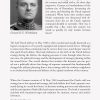May 1940 – War over Holland
€ 24,95
Winkelman’s Witzkrieg
Goossens, A. M. A | Paperback / softback | 07-04-2023 | 9789464629637
The dramatic defence of the Netherlands in May 1940 against the German invasion lasted only five days. It started with a mass…
Winkelman’s Witzkrieg
Goossens, A. M. A | Paperback / softback | 07-04-2023 | 9789464629637
The dramatic defence of the Netherlands in May 1940 against the German invasion lasted only five days. It started with a massive German airborne landing in the capital west of the country and ended with a, for those days impressive, German air bombardment of the harbour-city of Rotterdam, devastating the city centre and shocking the Dutch supreme command. When hours later another major Dutch community was threatened with destruction from the air the Dutch supreme command decided to surrender. How was it possible that a flat, water-rich country was seized so quickly by only modest German forces?
The brief Dutch defence in May 1940 is often mocked and usually dismissed as a logical consequence of its poorly equipped and prepared armed forces. Although to some extent these conclusions may be correct, there was a much deeper cause for that quick Dutch defeat. This book elaborates on the birth of the Dutch defence strategy during the thirties, the shaping processes it went through when the tension rose, the political leverage and the developments of strategic planning within the armed forces. The crucial element that enriches this dynamic pre-war period was a politically driven late change of supreme command that fundamentally changed the military planning from a joint strategy with the southern neighbours to an isolated and disconnected defence of the capital northwest of the country.
When the German invasion of 10 May 1940 transformed the Dutch cold war strategy into a hot operational strategy, the book follows the Dutch supreme command during its crucial first hours, its decision-making processes and adjustments and the anticipation of both allied and enemy manoeuvres. The book is extensively enriched with situational maps and endnotes for citations, sources and archive references.
| Gewicht | 0,352 kg |
|---|---|
| Afmetingen | 22,8 × 15,3 × 2 cm |
| Taal | Engels |
| Uitvoering | Paperback / softback |
| Auteur | Goossens, A. M. A |
| Verschijningsjaar | 2023 |
| ISBN | 9789464629637 |







